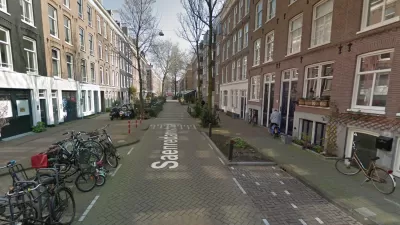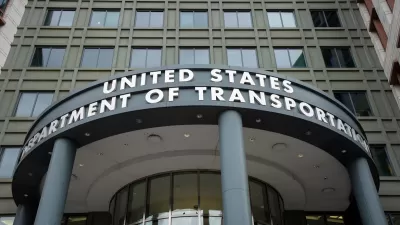Planning policies that produce cheap, abundant parking are fundamentally at odds with efforts to promote transit, biking, and walking. A new report from ITDP shows how some cities have started to align parking policies with sustainable transport.
It's been more than 35 years since American cities including New York, Boston, and Portland acknowledged the connection between parking policy and traffic generation by setting limits on downtown parking. Since then, parking innovation has proceeded at a snail's pace. Streetsblog reports on a new study that highlights how that's starting to change:
"In San Francisco and New York, programs to bring the price of curbside parking more in line with off-street parking are reducing the incentive to cruise endlessly for a cheap spot. In Portland, planners have reduced parking requirements for new development near transit lines, helping to improve walkability and increase ridership.
"Boulder provides an intriguing study in parking management as an economic development tool. This small Colorado city is one of the only places that introduced new parking policies during the 80s and 90s. After deciding they couldn't compete with suburban malls by imitating them, local merchants led an effort that effectively capped the volume of downtown parking and directed revenue from parking facilities to improve transit, walking, and bicycling."
FULL STORY: Want to Foster Walking, Biking and Transit? You Need Good Parking Policy

Manufactured Crisis: Losing the Nation’s Largest Source of Unsubsidized Affordable Housing
Manufactured housing communities have long been an affordable housing option for millions of people living in the U.S., but that affordability is disappearing rapidly. How did we get here?

Americans May Be Stuck — But Why?
Americans are moving a lot less than they once did, and that is a problem. While Yoni Applebaum, in his highly-publicized article Stuck, gets the reasons badly wrong, it's still important to ask: why are we moving so much less than before?

Using Old Oil and Gas Wells for Green Energy Storage
Penn State researchers have found that repurposing abandoned oil and gas wells for geothermal-assisted compressed-air energy storage can boost efficiency, reduce environmental risks, and support clean energy and job transitions.

Updating LA’s Tree Rules Could Bring More Shade to Underserved Neighborhoods
A new USC study finds that relaxing Los Angeles’ outdated tree planting guidelines could significantly expand urban tree canopy and reduce shade disparities in lower-income neighborhoods, though infrastructure investments are also needed.

California's Canal Solar Projects Aim to Conserve Resources and Expand Clean Energy
California’s Project Nexus has begun generating electricity from solar panels installed over irrigation canals, with researchers and state agencies exploring statewide expansion to conserve water and boost clean energy production.

HHS Staff Cuts Gut Energy Assistance Program
The full staff of a federal program that distributes heating and cooling assistance for low-income families was laid off, jeopardizing the program’s operations.
Urban Design for Planners 1: Software Tools
This six-course series explores essential urban design concepts using open source software and equips planners with the tools they need to participate fully in the urban design process.
Planning for Universal Design
Learn the tools for implementing Universal Design in planning regulations.
Heyer Gruel & Associates PA
City of Moreno Valley
Institute for Housing and Urban Development Studies (IHS)
City of Grandview
Harvard GSD Executive Education
Salt Lake City
NYU Wagner Graduate School of Public Service
City of Cambridge, Maryland





























